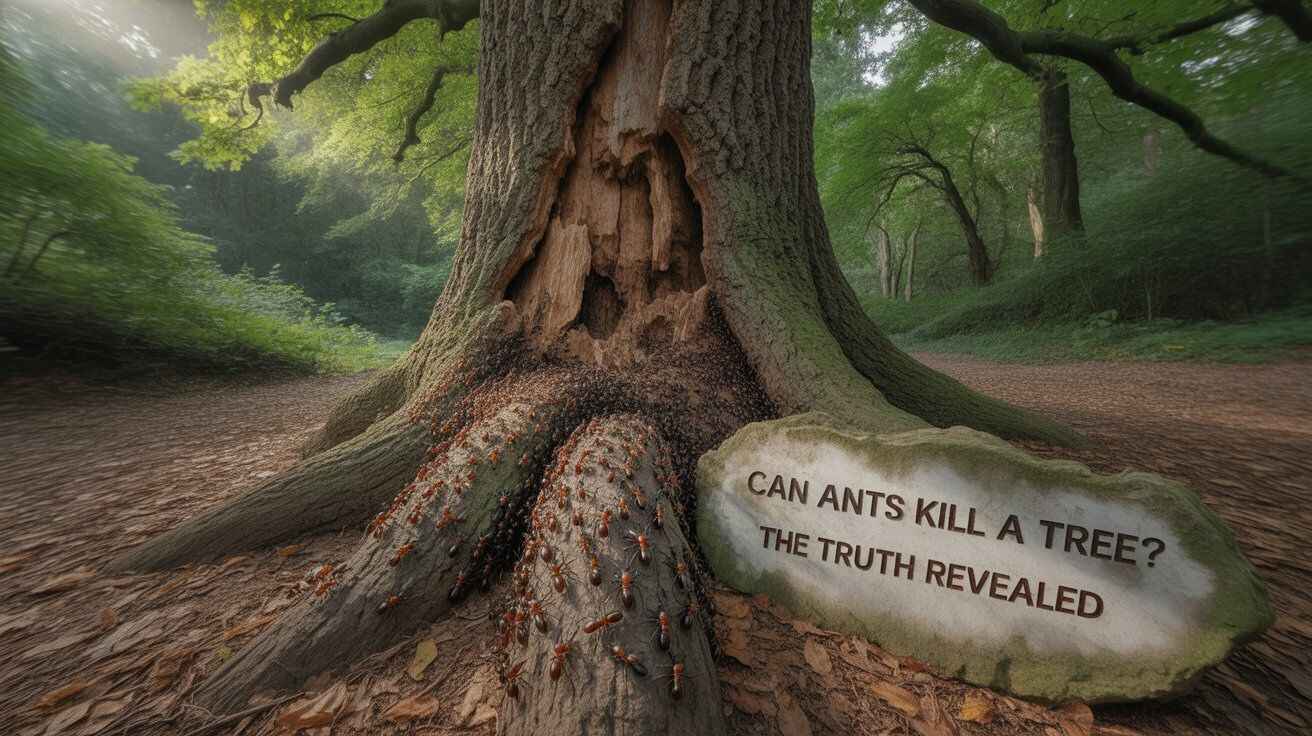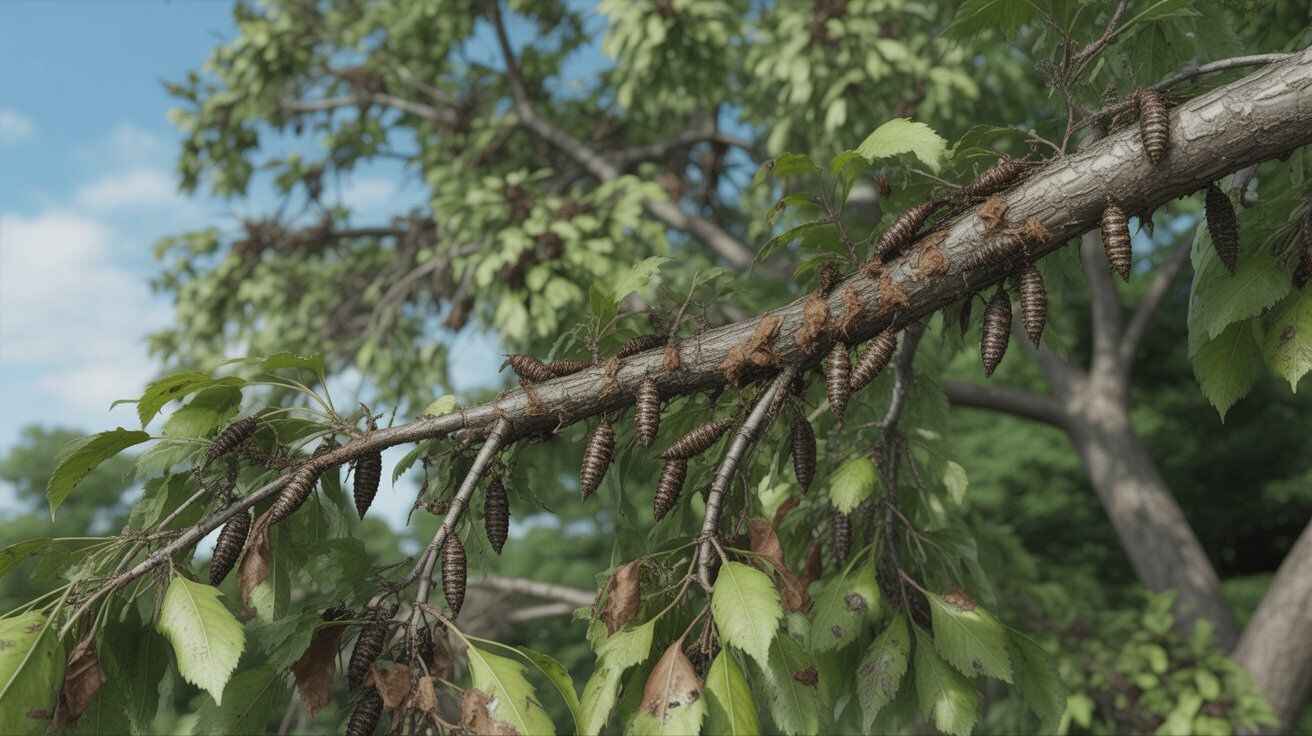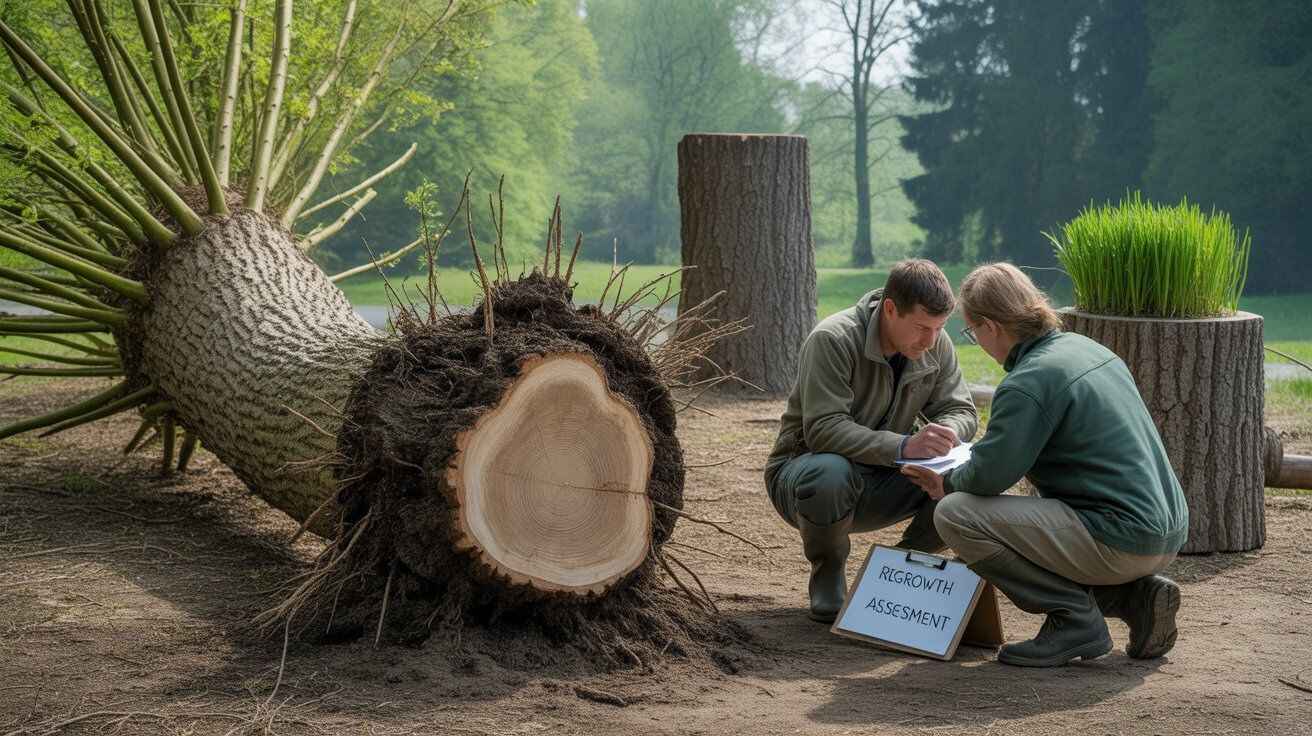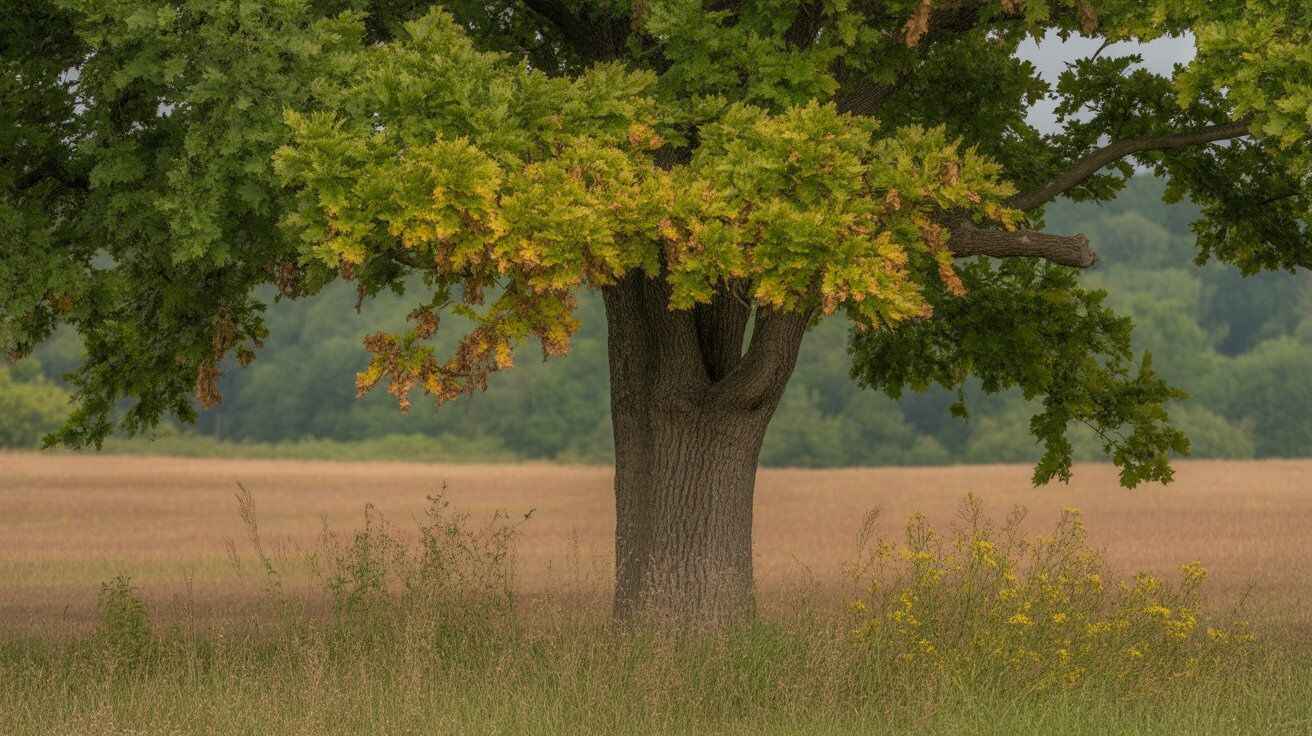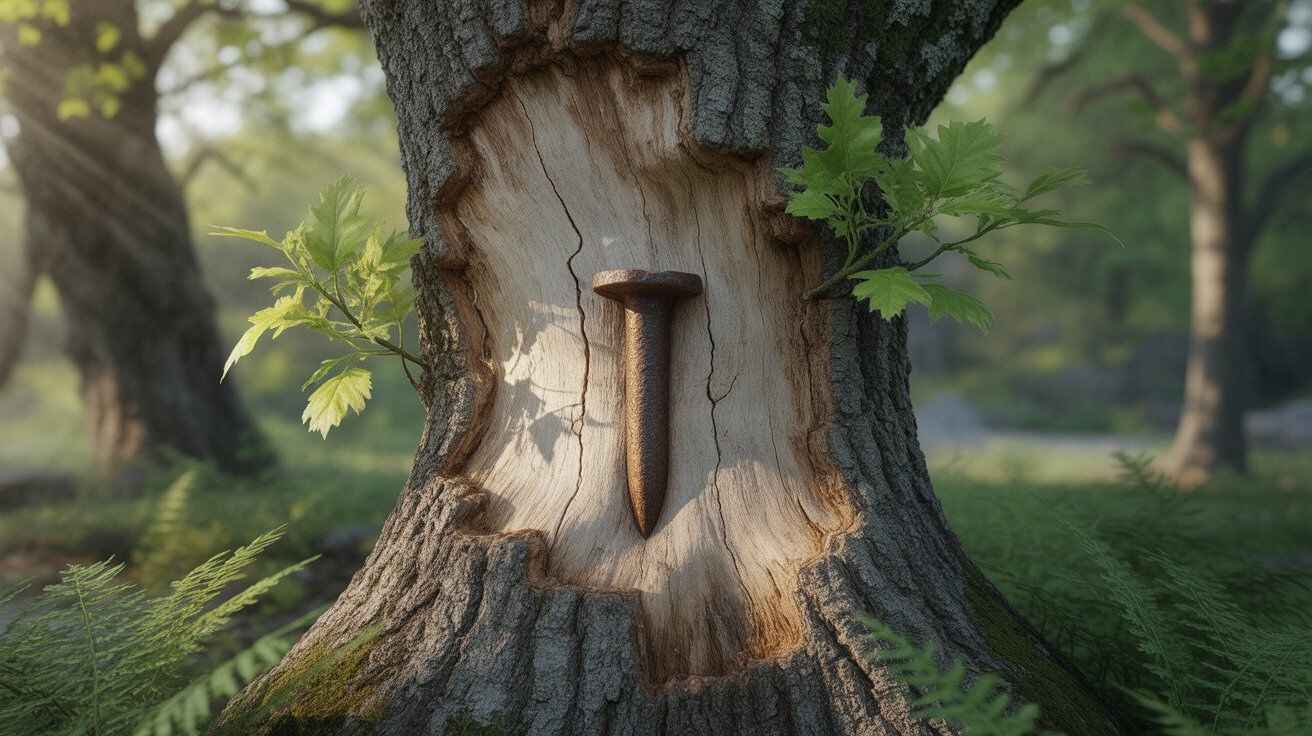Learn how ants affect trees, including damage from carpenter ants, aphids, and honeydew, signs of harm, and safe prevention methods.
Types of Ants That May Harm Trees
Not all ants are harmful, but some species can stress trees if conditions allow. Carpenter ants often nest in decayed wood, worsening structural weakness. Fire ants may damage young roots and disturb soil around the base, reducing stability.
Meanwhile, common garden ants farm aphids for honeydew, which leads to sooty mold and reduced photosynthesis. Although these ants rarely kill a tree directly, their presence signals other underlying issues like rot, pests, or poor tree health that require immediate attention.
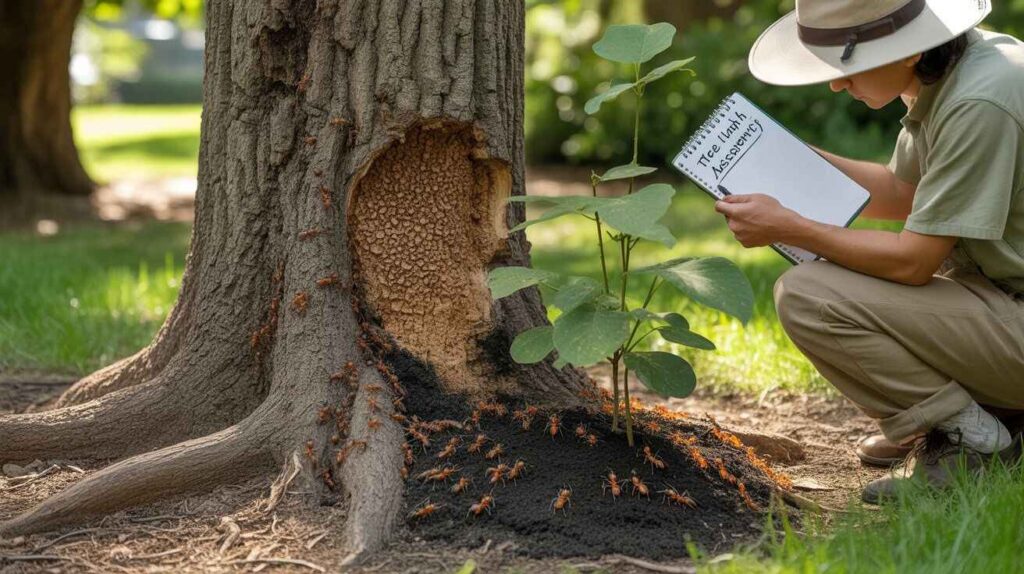
How Ants Interact with Trees
Most ants don’t eat wood or leaves, but they take advantage of weaknesses in a tree’s structure. They tunnel into decayed areas, worsening rot and making limbs unstable. Ants also protect aphids and scale insects, which feed on sap and weaken the tree further.
The honeydew these insects produce attracts ants and promotes sooty mold, reducing a tree’s ability to photosynthesize. While ants alone rarely kill a healthy tree, their activity often highlights underlying tree health problems that need fixing.
Signs Ants Are Harming a Tree
| Symptom | What to Look For | Possible Cause | Recommended Action |
|---|---|---|---|
| Increased Ant Activity | Trails along trunk or branches | Cracks, hollow areas, decayed wood | Inspect tree, treat infestations, call arborist if severe |
| Aphids / Honeydew | Sticky residue on leaves, black sooty mold | Aphid infestation attracting ants | Wash leaves, use insecticidal soap, monitor tree health |
| Weak or Thinning Branches | Branches break easily, sparse foliage | Internal damage or disease | Prune damaged areas, assess overall health |
| Soft or Spongy Bark | Press bark, feels unstable | Rot or pest damage | Remove affected areas carefully, consult professional |
| Early Warning Signs | Any combination above | Structural or pest issues | Early intervention improves recovery chances |
Can Ants Actually Kill a Tree?
Healthy trees are rarely killed by ants alone. Instead, ants take advantage of existing problems like rotting wood, hollow trunks, or heavy aphid infestations. Their tunneling can worsen decay and make the tree structurally weak, increasing the risk of falling branches.
When combined with pests that drain sap, the stress may lead to decline over time. While ants don’t usually kill trees directly, their presence signals deeper issues that need immediate care and monitoring.
Preventing Ant Infestations in Trees
The best way to stop ants from harming trees is by addressing what attracts them. Remove decayed wood, prune weak branches, and keep the base of the tree clear of debris. Controlling aphids and other sap-feeding insects reduces honeydew that draws ants.
Mulching correctly and avoiding excess moisture also protect roots. In some cases, sticky barriers or natural repellents can block ants from climbing. Healthy trees are far less likely to suffer long-term damage from ant activity.
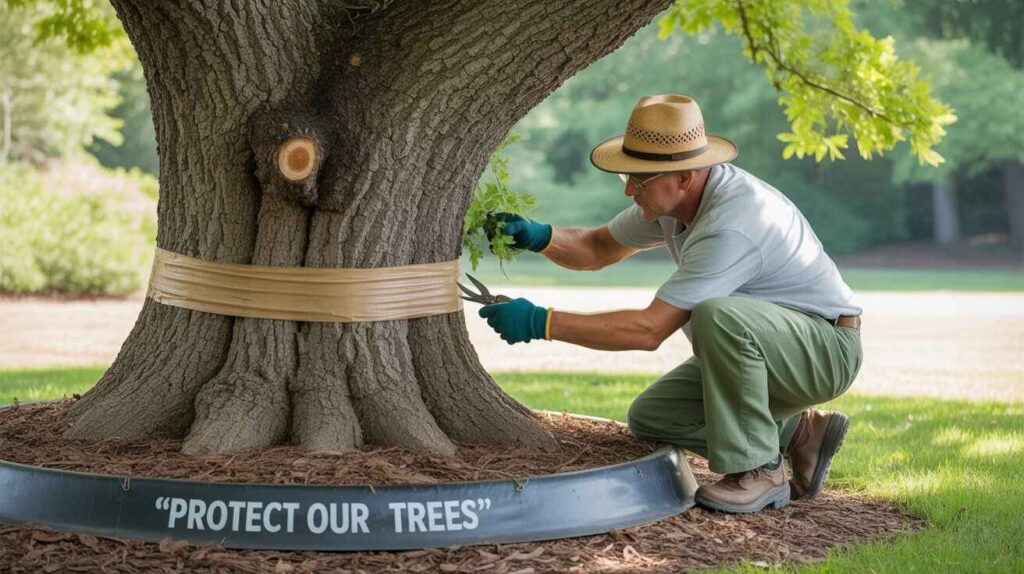
Safe Control Methods for Ants on Trees
Managing ants in trees should focus on safety for both the plant and environment. Avoid harsh chemicals that may harm beneficial insects or soil. Instead, use sticky barriers around the trunk to stop climbing.
Introducing natural predators or applying horticultural oils can reduce aphid populations, cutting off the ants’ food source. In severe cases, targeted bait stations placed near colonies help lower numbers. By combining these eco-friendly strategies, you can protect your tree without causing unnecessary harm.
Frequently Asked Questions
Can ants kill a tree directly?
No, ants don’t usually kill healthy trees. They exploit weaknesses like rot or pest infestations.
Why are ants climbing my tree?
Ants are likely farming aphids or scale insects for honeydew, which weakens the tree.
How do I stop ants on trees naturally?
You can prune decayed wood, control aphids, and use sticky barriers to block ant access.

Jhanzaib Khan, with over 50 years of dedication to nature and tree conservation, is a leading authority in the world of trees and environmental care. From his early years exploring forests to guiding communities in sustainable tree planting, Jhanzaib has combined hands-on experience with a lifelong passion for the environment. He specializes in tree species identification, tree care, forest management, and environmental awareness. His insights have been featured in multiple nature blogs, workshops, and local conservation projects.

